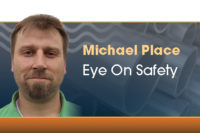October is national Sudden Cardiac Arrest Awareness Month. It is a time to raise awareness and to educate people on SCA as well as how to combat it.
To decrease the number of deaths related to SCA, we must understand what sudden cardiac arrest is. We also need to know what the warning signs are, and just as important, become familiar with how to respond when it happens.
Cardiac arrest occurs when the heart fails to maintain a normal rhythm and stops unexpectedly. It is the result of a person’s electrical system failing. If a victim of SCA does not receive CPR or help from an automated external defibrillator (AED), it is unlikely that person will survive. Making matters worse, only half of SCA victims indicated having any symptoms prior to falling ill. Those that did reported feeling warning signs on a wide-time scale ranging from hours to weeks.
Research data obtained last year through the Oregon Sudden Unexpected Death Study shows the most common symptom was chest pain. Other signs identified in the research include shortness of breath, dizziness, fainting and heart palpitations.
The best defense when SCA does occur is to have an AED available at your worksite. It is a fantastic tool that can be deployed right away. Since most SCA’s do not occur at the hospital, a victim probably will be outside the reach of immediate care at that moment of an SCA incident. An AED may be the only resource that stands between the life and death of a victim.
How does an AED work? Connected to the AED are two pads. They are placed on the patient’s chest. A computer inside the AED analyzes the heart rhythm of the patient to determine if an electrical shock is necessary. If a shock is needed, the AED uses voice instructions to provide guidance through the process. The mild shock from an AED resets the heart’s pumping rhythm, allowing it to return to normal function.
In the United States, approved AED devices use a digital voice as a guide through each step. Many AEDs now include visual prompts for the hearing impaired as well.
CPR also is recommended if a victim is not breathing. It provides circulation of oxygen-rich blood to the victim’s heart and brain. This circulation delays and minimizes oxygen deprivation in both areas and buys some time until an AED can arrive. CPR also makes the heart muscle more likely to respond to defibrillation.
It is recommended to do CPR until the AED arrives. Before attaching the AED pads to the victim, discontinue CPR and follow the voice instructions from the AED. It will tell you when/if to resume CPR. CPR generally is used as a holding action until the heart is defibrillated.
The American Heart Association offers CPR and AED training through its network of training centers. To locate a training center near you, call 877/AHA-4CPR. You also can take your own SCA risk assessment at www.SCArisk.org.




